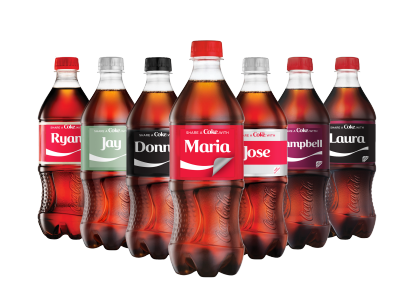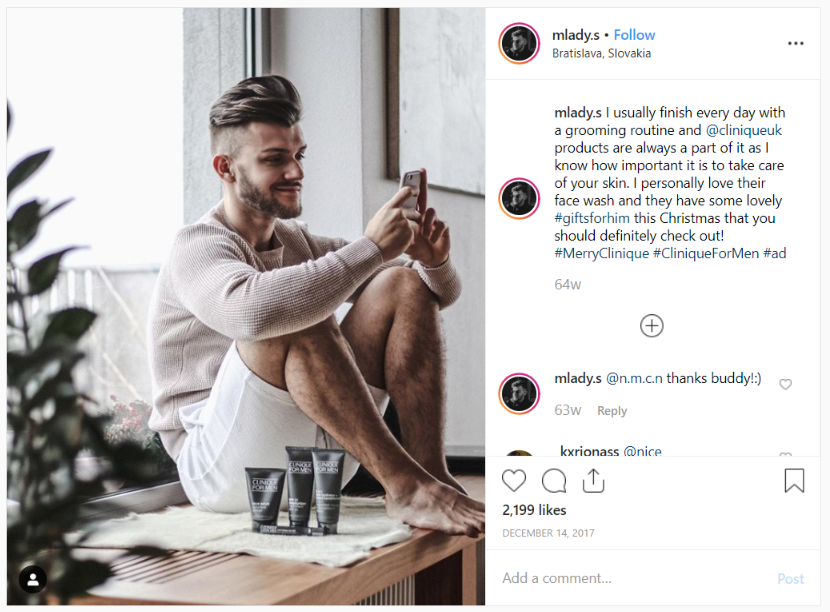In the US alone, digital marketing spending is expected to exceed $100 billion in the coming year.
That’s an impressive number that emphasizes the effort that businesses are making to reach consumers well beyond traditional marketing channels.
In fact, on a global scale, digital spend is expected to soon hit 50% of all monies spent on advertising. Vincent Letang, EVP of global market intelligence for advertising forecaster Magna Global, notes that “this symbolic milestone will be achieved in 2019 or 2020 at the latest.”
So, in a crowded marketplace where competition is only expected to increase, how can a company capitalize on their digital marketing investments?
More specifically, how will your company carve out an advantage?
The answer lies in the connections you make with your customers. But it’s not the number, and it’s not the channel or channels you employ to reach them, though those things certainly matter in some ways.
Instead, it all comes down to the type of connection, and it must be one thing above all others:
Authentic.
Why Authenticity?
Why should you and your company care about authenticity? Out of all the digital marketing strategies you could focus on, why does authenticity rank so high?
Because there’s so much noise.
Every day, millions of companies post millions of social media updates and blog posts. They send out emails, trying to convince people to buy, buy, buy. They spend millions on online advertising, hoping to make that money back from consumers.
In the midst of all the noise, it’s easy for customers to feel lost. Like they don’t really matter. Like all a company cares about is the bottom line.
If you can make an authentic, personal connection with your customers, you can stand out from the crowd in a truly dramatic way. You can win the hearts of new customers and continue to serve your existing customers.
Authenticity goes beyond simply selling to people to actually treating them as real people.
In our noisy world, that’s a powerful statement.
Making a Genuine Connection
How does one be authentic – specifically, a company looking to sell a product or service to a potential customer?
It’s not as tricky as you think, but it may require rethinking how to engage and grow your client base.
Your first step, of course, is to care about the consumer, but it runs deeper than that. At least it should.
Plenty of companies care about those handing over hard-earned dollars for a product, but are those organizations authentic about their approach? Or, as is often the case, are they just looking out for the bottom line and trying to stay ahead of the competition?
A better way to approach the business to consumer (or even B2B) relationship comes from a quote found – perhaps unsurprisingly – in the world of the arts. Famed writer and poet Maya Angelou once observed:
“I’ve learned that people will forget what you said, people will forget what you did, but people will never forget how you made them feel.”
Simple enough, and it highlights why some companies connect, and others don’t.
If you’re going through the motions, don’t be surprised when customers respond in the same manner – detached, at arm’s length.
Make a client feel something positive, something real, and they are very likely to remember it for many years after.
With that powerful idea in mind, here are five incredibly effective ways to not only reach both current and future customers but to genuinely connect and give them an authentic experience.
1. Care About the World, and Let Your Consumers Know
Consumers are looking to connect with companies on a level that goes beyond a product or service.
They want to do business with responsible brands that aim to improve more than just their revenue streams.
With a customer’s desire to engage with a responsible organization – your organization – comes the opportunity for your business to tell its story – where you came from, what’s important to you, and the positive impact you hope to make.
Build a compelling narrative, one that features how your firm gives back to your community or the approach it takes in being a responsible steward for the region (or an even larger footprint).
Through the use of effective messaging via images, video, or simple, succinct text, you’ll not only humanize your brand but give people a reason to care about your causes. In turn, you can further that bond by involving yourself in the ideals important to your customers.
Your story shows you as not just an entity within your sphere of influence, but as a real member of the community with the shared concerns and goals of the citizens who live there.
2. Be Local, Be Social, Connect With Consumers on Their Terms
It sounds like a tagline for a small-market television newscast, but it speaks to something that’s lost in the growing digitalization of society.
Companies often create Facebook pages but never do anything beyond posting a few stock photos. They simply create a page because they believe they are required to have a social media presence.
Similarly, why go through the trouble of creating a Twitter account only to post nothing more than coupons?
There’s more to having a social media presence than to checking off a marketing box somewhere. You must do something with it.
- Use social platforms as legitimate avenues for customer service.
- Harness the power of hot, buzzy mediums like video, which carry a personalized touch to your messaging and help to create dynamic engagement.
- Partner with influencers to tap into their loyal group of followers and turn them into trusted followers of your brand.
- Build tighter communities of consumers and clients through platforms like Facebook’s Group app.
- Oh, and make sure every piece of content or communication you create is mobile friendly.
Ultimately, be more than the company who’s just going through the motions.
Use the platforms your customers use. Meet your future buyers where they want to be met, and utilize connection points in a way that makes engagement seamless and organic.
Mark Schaefer, social media consultant and best-selling author of several books on social marketing, including Marketing Rebellion, points out the path that successful companies need to take:
“The smart companies are beginning to realize that people want more than artificial attempts at engagement. To cut through the clutter of our world, businesses will have to offer authentic communications that help people connect and create meaningful relationships.”
3. Don’t Be Afraid to Segment Your Message
Think about your smartphone for a minute and consider what it means to you, what it means to your spouse or children or a close friend or family member. Now, think about the product or service from which your company hopes to generate revenue.
Is your promotion a one-size-fits-all approach? Is it more segmented?
If it’s not the latter, it’s time to reconsider your marketing plan.
The appeal of a product or service is going to mean different things to different people. Those individuals are looking for your pitch to tap into that uniqueness.
Yes, you developed a solution to a problem, but you’ll ultimately deliver that solution to Millennials or Gen Xers or Baby Boomers or specific ethnic groups or single individuals or married couples or couples with kids or those without. and on and on.
Now, what you offer may not appeal to everyone, but learn who your audience is and tailor a message (and related content) that is explicitly for them.
Savvy consumers will appreciate the direct appeal.
4. Speak to Your Customer, Not Your Industry
Along the same lines of appealing to the segments that make up your client base, develop communication that speaks to your audience, not at or over them.
Your goal is to incorporate potential consumers into your brand. Spouting off technical specs or geekspeak that only industry insiders would understand results in the opposite – alienating individuals who are looking for simplicity.
Of course, be proud of company accomplishments or innovations just don’t get lost in them.
- Instead, maintain a simple yet appealing message.
Case Study #1: It’s hard to ignore anything Coca-Cola does, as the global giant is often celebrated for its advertising and authenticity. 
However, their “Share a Coke” campaign where the company replaces its logo on a 20oz bottle with the phrase “Share a Coke with” and then a person’s name underneath exceeds most others.
Running for the better part of this decade, the campaign connects with the consumer at a one-on-one level – rare for such a massive brand. It doesn’t hurt that it also helped to increase sales for the first time in ten years.
- Generate content that is inviting and offers an easy in for further engagement.
Case Study #2: Cosmetic brand Clinique introduced a line of products for men and needed to reach its target demo in a manner that was seamless and inviting.

They chose to target influencers – bloggers, outdoorsman, stylists – on social media who had large followings.
After the influencers incorporated the products into their regular routines, Clinique saw an engagement rate almost four times higher than what typically occurs on their Instagram account.
- Promote your organization, extolling your virtues, but also looking for feedback, making your interactions a two-way street.
Case Study #3: Outdoors clothier Patagonia made their virtues a two-way street by asking their consumers not to buy one of their jackets by laying out the environmental impact of the jacket’s production.

Instead, the ad appealed to the reader to consider how consumer habits impact the larger world. The message aligned with their core corporate values, and consumers responded. Revenues grew by 30% following the ad.
Consumers seek out products and companies they can trust. A straightforward presentation of who you are, what you do, and how you can help reinforces that confidence.
5. Create More Than Just a Customer
For your company to have staying power, it requires more than customers. It demands fans.
There’s little doubt that consumers want to do business with those they believe in.
To ensure the type of loyalty that breeds repeat customers and a robust referral network you need to have a full appreciation of your customers needs and how to address them.
- Provide multiple channels for questions or service inquiries.
- Be accountable and open about how your company operates including relationships that could prove conflicts of interest or policies that may impact the customer experience.
- Don’t abandon your clients after a sale. Follow up and make yourself available even more so than you were during the lead generation and sales process, backing up your commitment to your product or service by committing to your customers.
Erin Jones, the founder of RepBright, an Online Reputation Management Firm sums up the approach:
“If you want to increase your reach, become an invaluable resource for your audience, and interact with them accordingly. They’ll promote your brand for you, and your reach will grow considerably.”
Final Thoughts
Basic engagement with consumers is never really the problem, is it? All successful companies excel to some degree at marketing 101 – generating traffic and netting a few sales.
However, if you want to truly transcend marketing fundamentals and develop authentic, lasting relationships with your customers, remember these five principals:
- Care about the place you and your customers occupy.
- Meet your audience on their terms.
- Craft unique messaging that speaks to your unique clientele.
- See eye to eye with those seeking to do business with you.
- Build brand loyalty by extending the relationship, creating fans and not just clients.
Above all else, make your case for your company and the solutions you provide by making it personal with your customers.
This is a Contributor Post. Opinions expressed here are opinions of the Contributor. Influencive does not endorse or review brands mentioned; does not and cannot investigate relationships with brands, products, and people mentioned and is up to the Contributor to disclose. Contributors, amongst other accounts and articles may be professional fee-based.

